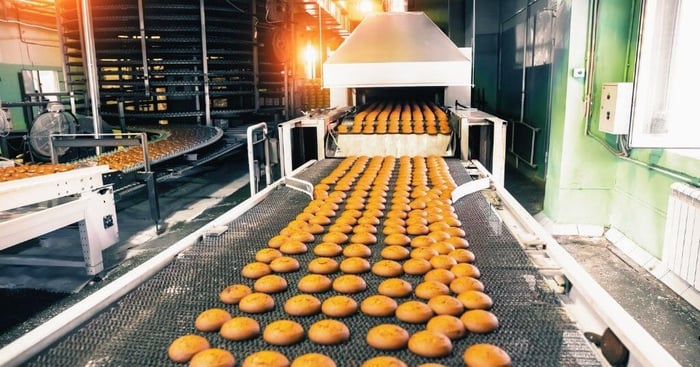Bakery wastewater contains high levels of contaminants including FOG (fat, oils, grease), solids, and other pollutants which drive up the levels of COD. Without treatment, this can have a severe impact on the natural environment. Because of its complex makeup, it is important to properly treat wastewater from bakeries before discharging it into the sewage system.
Generally, bakery products are bread products, speciality items (cakes, doughnuts, etc.), and pastry products. As would be expected from such products, the main organic compounds found in bakery wastewater derive from flour, sugar, yeast, oil, and grease. There may also be ascorbic acid and other preservatives present. Volume and proportions vary depending on scale and time of year.
What are the characteristics of bakery wastewater?
Wastewater generated from bakeries contains levels of contaminants far too high for release into the sewage system. This effluent is high loading with a fluctuating flow and features large amounts of oil and grease. Such wastewater is highly acidic containing a lot of flour, butter, and various types of fillings. For this reason, biological treatments at later stages are extremely effective in reducing BOD levels.
Is there an environmental impact of Bakery Wastewater?
With potentially high levels of TSS (total suspended solids), BOD, COD, and other pollutants, bakery wastewater can be extremely harmful to the environment. Without proper treatment, this effluent will reduce the DO (dissolved oxygen) available in water placing aquatic organisms under incredible strain and stress.
Enduramaxx can provide the tanks and other materials required to remove TSS and reduce BOD levels before effluent can be safely discharged.
Methods of Bakery Wastewater Treatment
Primary treatments are efficient ways of ridding wastewater of large solid particles. This can be done through screening, using a variety of screen opening sizes that remove coarser elements. By eradicating large particles, including suspended solids, the overall BOD levels of the water will be greatly reduced. These BOD levels may also be unusually high, to begin with, due to the presence of sugar from bakery goods.
FOG (fat, oils, grease) also needs to be removed from the effluent. Bakery wastewater tends to have a large volume of FOG which can solidify and congeal, clogging pipes and tanks. Therefore it’s necessary to eliminate FOG at the earliest stage possible.
DAF
Dissolved Air Floatation (DAF) is an effective secondary treatment for bakery wastewater. DAF releases micro-bubbles into the tanks that then cause particles to rise to the top of the tank where they can be easily removed. In some cases, the use of a DAF treatment can remove more than 90% of FOG and TSS.
Biological Treatment
Another of the most common methods of treating bakery wastewater is the activated sludge process. Biological treatments can remove biodegradable elements contained in wastewater through the use of microorganisms.
An additive process known as bioaugmentation is also effective in the breakdown of FOG. By introducing microorganisms, it can break down bonds between fatty acids and glycerol. An increasingly popular alternative to this method involves stimulating indigenous bacteria to biodegrade FOG. This can reduce sludge volume and improve settlement overall.
Enduramaxx stock a range of tanks including Effluent Sludge Storage Tanks and Settlement tanks that facilitate this process. For more information visit the Enduramaxx site.
Efficient Bakery Wastewater Treatment
Due to its complexity, bakery wastewater requires the best treatment and storage tanks. Without an efficient system, businesses can incur penalties if the effluent does not meet legal standards. However, creating a well-maintained treatment process doesn’t have to be an uphill battle – Enduramaxx can help.
How can Enduramaxx help with Bakery Wastewater Treatment?
Enduramaxx has everything bakeries need for a complete wastewater treatment process. For more details on storage tanks and process tanks for how is commercial bakery wastewater treated, our experienced staff are more than happy to discuss the ideal treatment options for your business.
enduramaxx.marketing
Related Posts
Using the Correct Tanks in Your Effluent Treatment Processes
Wastewater and trade effluent discharged from the food and beverage industry is often contaminated...
10m3 Conical Tanks for Yorkshire Bakery Wastewater Treatment
10m3 Conical Tanks for Yorkshire Bakery 10m3 Conical Tanks for Yorkshire Bakery –...
Aeration Tanks For COD Reduction In Industrial Wastewater
Aeration tanks for COD reduction in industrial wastewater are used with internal aeration to treat...



